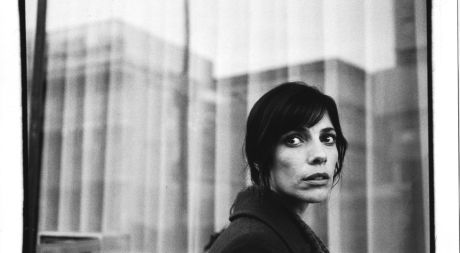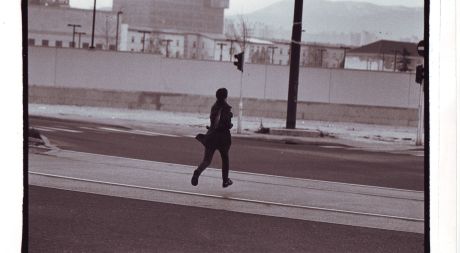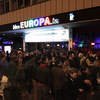1395 Days without Red / 1395 dana bez crvene
Šejla Kamerić, UK, Bosnia and Herzegovina, 2011.
Directed by: Šejla Kamerić
Producer: James Lingwood, Amra Bakšiæ Èamo, Jovan Marjanoviæ Production company: Artangel, SCCA/pro.ba Cinematography: Patrick Ghiringhelli Editing: Penda Houzangbe Cast: Maribel Verdú
Format: video
Running time: 63' Synopsis '1,395 Days without Red' was conceived, developed and filmed as a collaborative film project by Å ejla Kameriæ and Anri Sala. The project has given life to two different films. The Museum of Contemporary Art Zagreb and Zagreb Film Festival will present Å ejla Kameriæ's film. An elegant young woman makes her way through an empty city. At every crossing she stops, looks and listens. Should she wait or should she run? Should she wait for others or take the risk on her own? The city is Sarajevo, and the route the woman takes became known as Sniper Alley during the siege of the city endured by its citizens for 1395 days between 1992 and 1996. The woman, played by Spanish actress Maribel Verdú, is reliving the experience of the trauma of the siege. It is her individual journey through the collective memory of the city. Throughout the siege, the Sarajevo Symphony Orchestra continued to play. In Kameriæ and Sala's films, the orchestra rehearses Tchaikovsky's 6th symphony, the Pathetique. The musicians stop and start, repeating different sections of the symphony, just as the woman stops and starts in the city. Hearing the music in her head, she finds the courage to carry on... The Siege of Sarajevo lasted for 1395 days. The citizens didn's wear bright colours for fear of alerting their movements to the snipers watching from the hills above. Directors Biography Å ejla Kameriæ was born in 1976 in Sarajevo, Bosnia and Herzegovina. She uses mainly photography, video and film as media juxtaposing an explicit social context with intimate perspectives. Her approach to art also includes public interventions, diverse types of actions and site-specific installations. Curator Dunja Blazevic has commented that ‘learning about life in the cruellest way and knowing how to transform such experiences into art is the essence of her work.' Theoretician Anselm Wagner wrote succinctly about her work: ‘Kameric’s specific achievement is not a matter of authentically embodying a European trauma. It is rather the case that in her work we become a part of the trauma, slipping into the roles of victims and perpetrators and suddenly feeling what mechanisms are here at work.' Her works have been exhibited throughout Europe, in the USA and in Japan, and have been included in some prestigious European collections such as Muse d'Art Moderne de la ville de Paris; collection of The Barcelona Museum of Contemporary Art; Museum Boijmans Van Beuningen Rotterdam and Museum of Contemporary Art ZagrebÂ. She won the National Gallery of Arts, Tirana, Albania ONUFRI award for 2004, Special award at (46th) October Salon, Belgrade in 2005 and The ECF Routes Princess Margriet Award for Cultural Diversity in 2011. Å ejla received DAAD- Berlin, Artist in Residency Fellowship for 2007. Kameric is amongst a generation of artists equally at ease presenting new work within the context of international art exhibitions as well as film festivals. Her first short film What do I Know, premiered in Corto Cortissimo section of (64th) Venice International Film Festival and circulated over 40 film festivals winning Golden Pram for the Best Short Film awards at (5th) Zagreb Film Festival and (15th) Adana Film Festival. 'Glück', a 16mm short film premiered at the Sarajevo Film Festival and screened in the short feature competition of 2010 Zagreb Film Festival where it got special mention of the jury. Her film 1395 Days without Red premiered at 2011 Manchester International Festival. She lives in Berlin and Sarajevo.
Location and screening schedule: MUSEUM OF CONTEMPORARY ART, Saturday, October 22nd at 21.30
MAINPROGRAM
SIDEPROGRAM
ZFFSCHEDULE
ŠEJLA KAMERIæ'S RETROSPECTIVE AT THE MUSEUM OF CONTEMPORARY ART ZAGREB
ZFFFOTO
|














